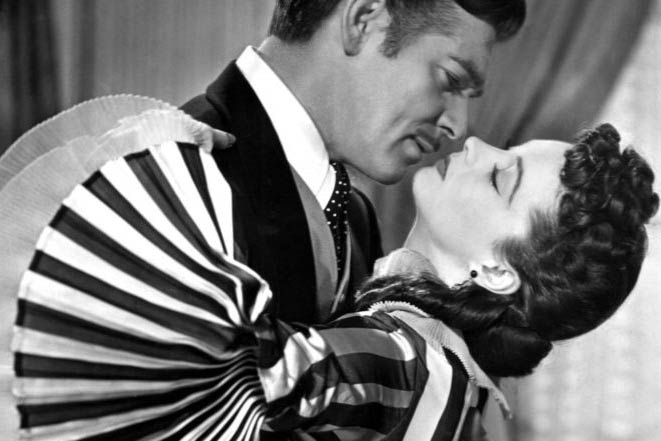The winds in Niagara are blustery this month, and they were really whipping around as I attended the International Women’s Day event. I braved the winds because I was excited to attend this annual event put on by the Women in Niagara council. The event is a great opportunity to empower, educate, and celebrate women. Kind of like I do everyday, but in this venue with a room full of inspiring women.
As I walked around the IWD event chatting with vendors, I was fortunate enough to meet Scarlett. A mutual friend introduced us and Scarlett shyly asked if she could get some advice when she found out I was a financial advisor. I wasn’t surprised that Scarlett was shy – unfortunately, finance remains a topic that is often discussed only when absolutely necessary. And that is often in hushed whispers with palms to foreheads.
Like many in Niagara, Scarlett was struggling to make her way as an independent woman. Her struggle automatically made me think about that iconic film: Gone With the Wind.
This ain’t your great-grandmother’s era…
In Gone With the Wind, Scarlett O’Hara finds herself in poverty after the Civil War and claws her way out – learning a great deal about herself in the process and growing physically and psychologically as a result. You are not living in the American South during a time of great upheaval. You are living in Niagara during a time of infinite possibility for women. Right?
Well, sorta.
The time warp: It’s just a step to the right
A lot of women find themselves experiencing many of the struggles their great grandmothers faced.
Chief among those experiences is financial dependence on a spouse. Whether you are a stay-at-home mom (who thus works 24/7), or a woman who was laid off (a definite reality for many Niagara residents), or a woman who was forced to leave work for an illness or another reason (raise your hand if you are looking after an aging parent) – you may be faced with a lack of independent income.
Although you may rely on your spouse to support you financially, there are many ways you can retain your independence and empower yourself financially. Don’t get me wrong: I’m not saying you are a meek doormat. Quite the opposite! If you are like most of the women I meet, you have a life filled with busy and wonderful things, you are extremely intelligent, and you run your household like a well-oiled machine!
But this wasn’t the case for Scarlett. For her, she lacked financial literacy. She had a full-time job in marketing, but she was driving a Civil War-era car and the dream of owning a new car seemed out of reach. She knew she was supposed to save money, but Scarlett didn’t know if she could spend some of her savings on a new car, or if she had to keep all of it for her retirement like the RRSP posters seemed to say. Scarlett had no idea if a loan was a good option “because interest rates were on the rise, or something like that”. She didn’t know what to do.
Well, she did the right thing. She spoke to a financial advisor. She took the first step in empowering herself.
No one is coming to save you: Empower yourself
Scarlett’s lack of financial literacy didn’t make her weak or unintelligent, it made her part of the majority of people who stigmatize finances. A lot of the women I speak to in the branch, and in my community outreach, are not financially educated. A lot of people shy away from finances because it is a stressful topic, all-to-often associated with shame. As a result, they lack an understanding of basic financial terms and services, and how they can succeed financially.
How do we change that? How do we empower women to take charge of their financial future?
Empowerment checklist
-
Make finances important.
Remove the stigma associated with finances. Debt is not a dirty word and money does not need to be a taboo topic. Give finances priority in your life and be proactive in dealing with them. You will be rewarded with less stress and greater stability. How do you do that? See steps 2 to 4 to get started.
-
Educate yourself.
Learn about the in’s and out’s of finances. Come out to a seminar put on by PenFinancial on financial literacy, or visit a financial advisor in your branch, and whatever you do, ask questions. No question is too basic. I have explained the difference between chequing and savings accounts to an immigrant woman on the same day that I explained the differences between TFSAs and RRSPs to an executive approaching retirement.
-
Keep your eyes on your own plate.
Understand that everyone’s financial situation and needs are unique. Although an aggressive RRSP-contribution plan may have worked for your uncle’s best friend, it may not be the solution for your financial woes. You don’t need to hide your financial situation from yourself and everyone else, but know that the solution that fits your life may not fit someone else’s life.
-
Ask for help.
Be open to expert guidance. Your education doesn’t have to stop with a single visit to a financial advisor. As your life changes, your financial needs will change and you may need to understand new concepts or receive guidance on a new financial path. Visit your branch regularly for life events planning and continue on a positive path.
She learned to give a damn
Although we no longer live in the Civil War era of oppression, women continue to struggle with financial independence.
By the end of our chat, Scarlett agreed to come in to see me at the branch. She took the first step by speaking up and asking for help. Together we’ll work together to teach Scarlett about finances, reduce her stress, and find a solution that works best for her life at this point. She is making money a priority and trusting herself and the experts to find a path of financial strength and independence. Those sounds like the winds of change we all need!






